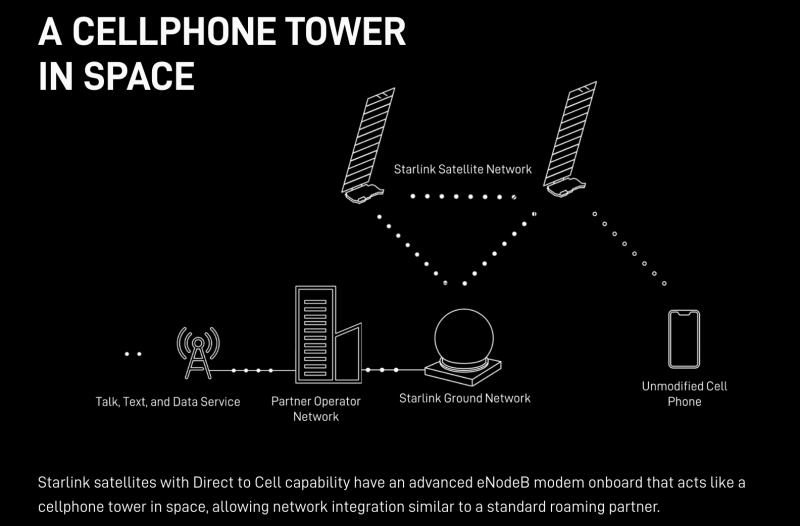Since summer 2022, when SpaceX and T-Mobile made a big announcement that they were working together to someday provide a satellite-to-mobile phone service, we haven’t heard anything more.
But now, SpaceX has created a new webpage, which says texting on regular smartphones will be available in 2024 with voice and data starting in 2025.
The SpaceX website is sparse on details, but it does say the Starlink Direct to Cell service will work with existing LTE phones wherever you can see the sky. And subscriber phones won’t require any changes to hardware, and no special apps will be required.

SpaceX says, “Direct to Cell satellites will initially be launched on SpaceX’s Falcon 9 rocket and then Starship. On orbit, the satellites will immediately connect over laser backhaul to the Starlink constellation to provide global connectivity.”
It looks like in the intervening time since SpaceX and T-Mobile announced their partnership, SpaceX has also partnered with other wireless carriers, including Rogers, KDDI, Optus, One NZ and Salt.
But in the U.S., SpaceX still needs to get some spectrum permissions and other technical permissions from the Federal Communications Commission (FCC). In December 2022, SpaceX filed a request with the FCC to add a direct-to-cellular payload to 2,016 of its second generation Starlink satellites.
And as recently as September 20, SpaceX and others met with the FCC’s Space Bureau staff to discuss the pending request.
Technical challenges
Recently, The Aerospace Corporation, a non-profit that does technical analysis for the satellite industry published a paper entitled “The Great Convergence and the Future of Satellite-Enabled Direct-To-Device.” The paper said, “Connecting a consumer-grade cell phone to a fast-flying LEO satellite or a very distant GSO satellite is no small feat.”
First, an operator must conduct a link analysis to account for the difference between the transmit power and the receiver power. For communication between an LEO satellite traveling at 17,500 miles per hour at 400 kilometers altitude, both relative speed and distance contribute to closing the link between the mobile device and the terrestrial base station. Research, tests, and demonstrations are currently underway to explore how existing cell phones (with no physical modifications) can connect directly to satellites, states the paper.
Lynk Global’s patented technology, for instance, has successfully demonstrated how to advance or retard the transmission and send bursts of radio frequency (RF) signals to account for propagation delays. AST SpaceMobile has also provided successful frequency compensation techniques to link to a consumer-grade cell phone, stated The Aerospace Corporation paper.
The mobile network operator must also provide network software to ensure that the phone is “tricked” into accepting the time delay from an extended range connection.
And finally, a cell phone connecting to a satellite needs to operate at higher power levels to close the link with a satellite. This could impact the cell phone’s battery life.
China
Recently, Huawei shocked the telecom industry with the 5G capabilities of its new Mate 60 Pro phone, which also has phone-to-satellite capability.
The Mate 60 Pro’s satellite capability only works with China Telecom’s network, using three geosynchronous (GEO) satellites with coverage of China plus most of Eurasia and the eastern half of the continent of Africa.